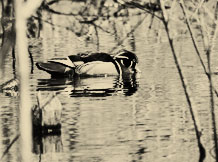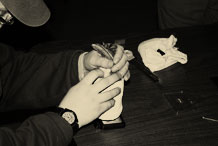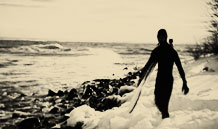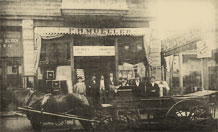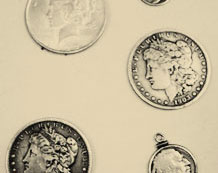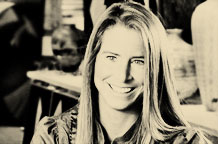
Illustration by Sophia Rapata [photo by Sophia Rapata]

A Tragic Comedy of Errors
October 13, 2012
It was an early show on June 1, 1918. It was a great show, in fact, for the Hagenbeck—Wallace Circus. They performed a charity show for the inmates locked up in the State Penitentiary of Michigan city, Indiana. Joe Coyle was a happy clown that day.
Born in 1881, Joe Coyle, also known as “Big Joe”, was destined to be a performer. He had his start in 1901 doing a bicycle act and singing in concert for the W. H. Harris Nickel Plate Show. That next year Joe left that circus for another circus, John Robinson Big Ten Show. Coincidentally, the Harris Nickel Plate Show seen the tragedies of one of their elephants, Gypsy, crush its trainer November of that year, though not its first victim. This was Joe Coyle’s experience before joining the Hagenbeck—Wallace Circus as a clown. Joe was happy because his wife Stella, nine year old son Howard and two and a half year old, Joe Jr., sometimes called, “Little Joe”, came up from Cincinnati to join him. They were to ride along for a visit until they reached Hammond where they would take a return train home. He was grateful for the visit.
***
At 5 P.M. in Kalamazoo engineer Alonzo Sargent reported to work, though lacking sleep before his shift. Three hours later he got his orders to operate Engine Extra 8485.
World War I kept the railroad busy with transporting troupes from the center of the nation to the east coast to be shipped overseas to the front in Europe. From the east coast the trains would return empty to pick up more soldiers to transport. Extra 8485 was one of those trains used to mobilize the fighters. Consisting of twenty one steel Pullman cars, it was returning from the east coast and made a stop in Kalamazoo, Michigan before continuing to reach its destination, Chicago.
Edward F. Burgess along with brakeman W.R. Jackson and flagman J.E. Moyer and three porters took seats in the caboose. Conductor L. Johnson was the only one riding in the sleeping cars. Since the train was empty of troupes, Sargent was the only one in the cab of the engine. Engine Extra 8485 with cars in tow left Kalamazoo at 10:55 P.M.
The first circus train, loaded with circus equipment, work and show animals, had left Michigan City at one o’clock in the morning. The second circus train was being loaded at the time. This was common practice for circuses with multiple trains. It was the circus performers and workers who packed up and loaded the trains, so naturally once one train was loaded it would disembark and the second train, they one that carried the passengers, would then get packed with the remaining equipment followed by the boarding of the circus employees.
The second circus train, pulled by Engine Extra 7826, had seven stock cars and fourteen flatbeds all carrying gilded covered circus wagons and work trucks, followed by four Pullman sleeping cars seventeen, fifteen, sixteen and five, and ended with the caboose which was owned by the New York Central.
Performers and workers were nestled in their bunks, built into the wooden sleeper cars. Their only light source was oil and kerosene lamps. Only one car had electric. On warm days some of the weary travelers would prefer riding in the work trucks to escape the stifling sleepers. Tonight, however, there was a chill in the air.
Three men occupied the cab of the engine; engineer Gasper, fireman Clyde Phillips and front brakeman Curtis Aust. Way back in the caboose were train conductor R.W. Johnson, train Master Fred Whipple and rear brakeman Oscar Timm. At two thirty in the morning, the train started to roll on its way to Hammond.
***
The troupe train reached Michigan City for a quick stop at 2:47 in the morning where Fireman Gustav Klauss relieved fireman Edward F. Burgess and to fill the water tank. Ten minutes later, they were once again on their way.
The trip was slow going for Engine Extra 8485. The train had to slow down twice due to a freight train that was traveling ahead of them, but that train eventually turned off onto another set of tracks. A cool breeze started to blow across the lake and over the lands south. Alonzo Sargent decided to close the window of the engine cab to cut the chill. The firebox made it cozy warm inside. Soon, the engineer drifted asleep.
The train rolled on. The inhabitants were unaware that they were riding on a 25 miles per hour runaway, 150 tons of engine, steel cars and caboose…
Tune in next week for part three of our feature.



